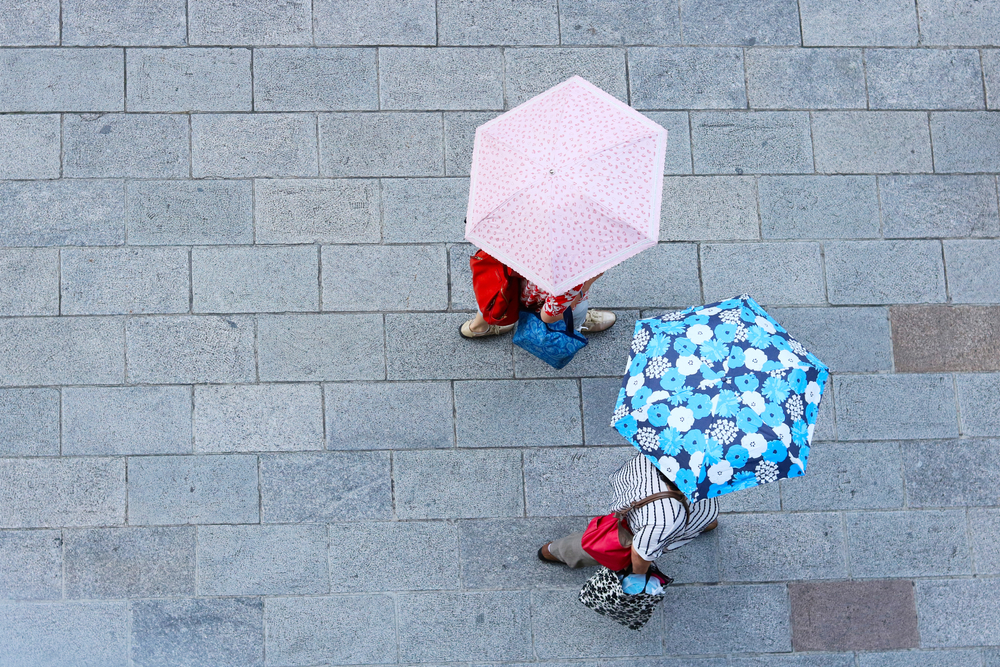Using a modern higasa (Japanese sun parasol) has been shown to cut heat by up to 10 degrees. Having been used in Japan for nearly 2,000 years, we decided to take a look back at the folding canopy’s colorful history.
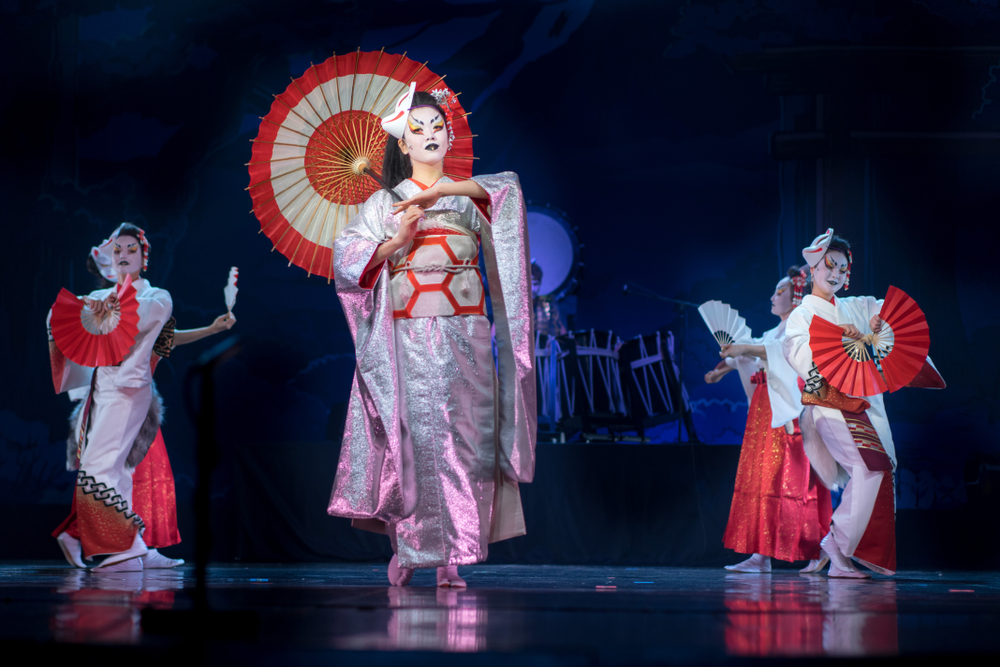
The History of the Higasa
Invented in Egypt over 4,000 years ago, sun parasols were first seen in Japan in the fourth century, when they were used by the Japanese nobility. The first higasa were made of silk and used mainly for ceremonial purposes.
Around 300 years later, in the Heian Period (794-1185), the higasa paper technique was introduced to Japan from China. This development gradually made them more accessible and easier to produce.
By the time of the Muromachi Period (1336 to 1573), higasa were used by most of the population. From aristocrats to farmers, it was seen as a way to protect from the sun’s bright rays. It was especially common for children to use higasa. Come summertime an abundance of higasa could be seen displayed across generations.
In the late 1500s, children’s higasa were elaborate with black lacquer handles, decorated with bells, tassels or other embellishments. The most dominant color was blue, though some variations included up to five colors.

Controversy
Japanese parasols continued to grow in popularity and by the 1700s most children had their own for the hot summer. Higasa designs became more elaborate and detailed, with artisans painting colorful scenes and patterns onto the paper.
In 1749, the use of the higasa for adults was banned in Kyoto by the shogunate. Despite this, production continued. In 1804, the beautiful designs that had become common proved a sticking point as higasa use was further banned under the ‘no luxurious goods’ austerity policy.
The prohibition spread from Kyoto to other cities including Osaka. The ban, however, had the opposite effect, resulting in the higasa becoming even more desirable. Then fabric parasols from the West arrived in 1868. As a result, the traditional paper Japanese higasa started to become scarce. It was saved for special occasions, often paired with a kimono.
Fast forward to the 21st Century and the main types of higasa are made of nylon with a silver lining to protect the user from the sun.
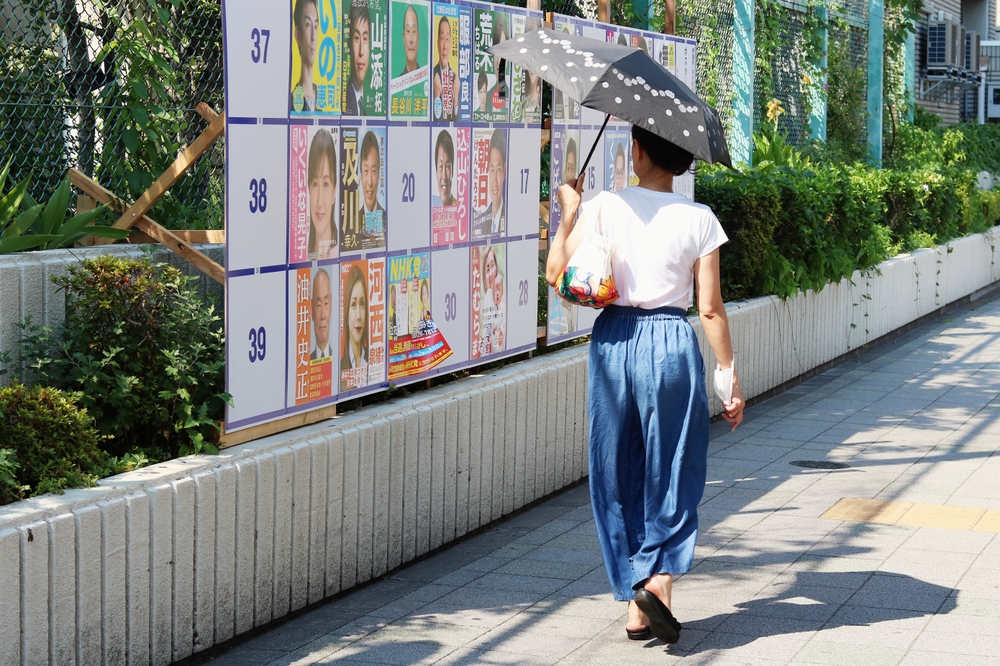
Modern Higasa (Japanese sun parasol) / Ned Snowman shutterstock.com
Modern Higasa (Japanese Parasol)
While the West has largely abandoned the use of the parasol, the custom lives on in the Land of the Rising Sun. It’s not uncommon to see men and women walking the streets carrying what looks like an umbrella on a sunny day.
In Japan, which has recently been seeing record-breaking hot temperatures and humidity, any way to protect and reduce the blazing heat is a blessing. Regular warnings against heat stroke are heard via loudspeakers throughout towns and on the news. It’s, therefore, easy to see why Japanese sun parasols have been enjoying a resurgence in popularity.
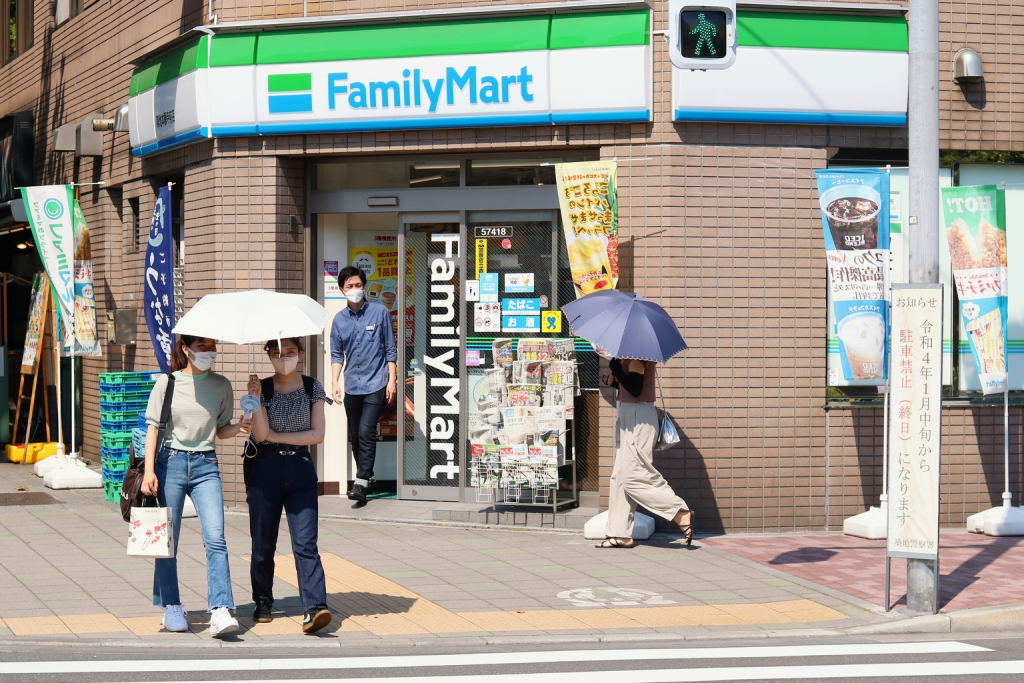
Modern Higasa (Japanese sun parasol) / Ned Snowman shutterstock.com
In addition, modern Japanese higasa for everyday use are sturdy and are very similar to umbrellas. Many double up as both, and can even be folded making them easy to carry around. The main difference is that dedicated Japanese parasols have a silver lining or outer coating designed to deflect the heat away from the person below.
Using modern technology, higasa makers claim that carrying a Japanese parasol for just 10 minutes can reduce the heat by up to 12 degrees. Some higasa brands even incorporate materials such as titanium into the cover itself, enabling heat deflection of up to 37 percent.
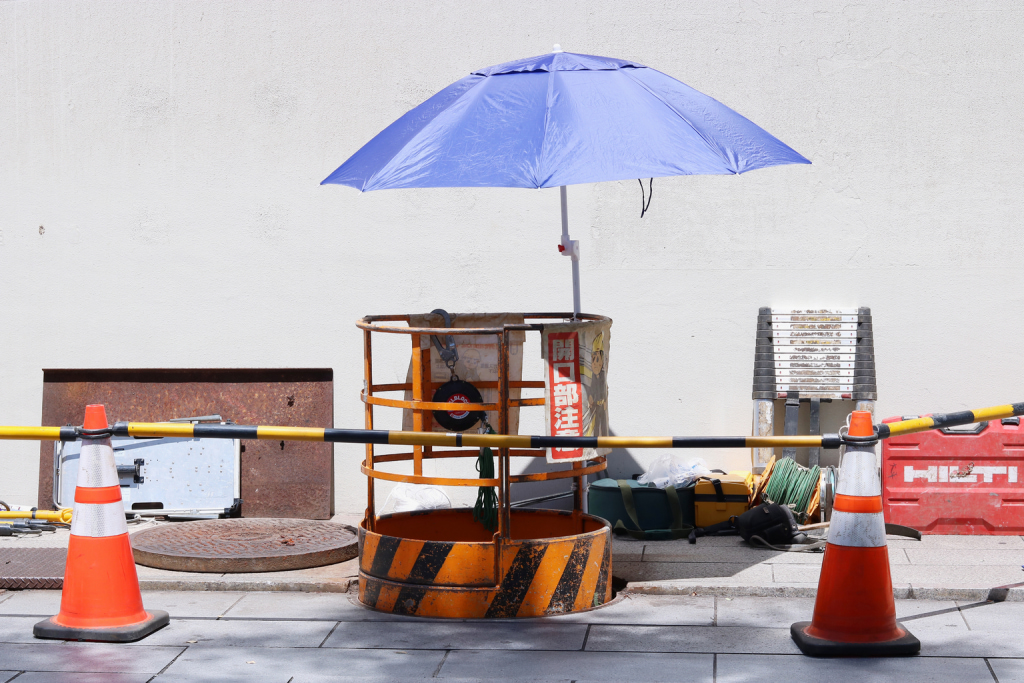
Japanese Sun Parasol / Ned Snowman shutterstock.com
Unisex Higasa
Historically, higasa have been used by all sexes but throughout the 20th Century, the image of them being for women became prevalent, with many ‘feminine’ designs including lace.
This image, however, has been changing. Brands such as Montbell, Yohji Yamamoto and Journal Standard have all released their own range of unisex umbrellas, some marketed as being for both sun and rain.
While there are new, branded higasa, old paper styles are still about, with some companies in Kyoto and Osaka painstakingly crafting them to this day. The delicate designs carry favor for photoshoots and one-off special occasions.
After a surprisingly mixed history, it seems the higasa is here to stay.
Updated On July 4, 2023

